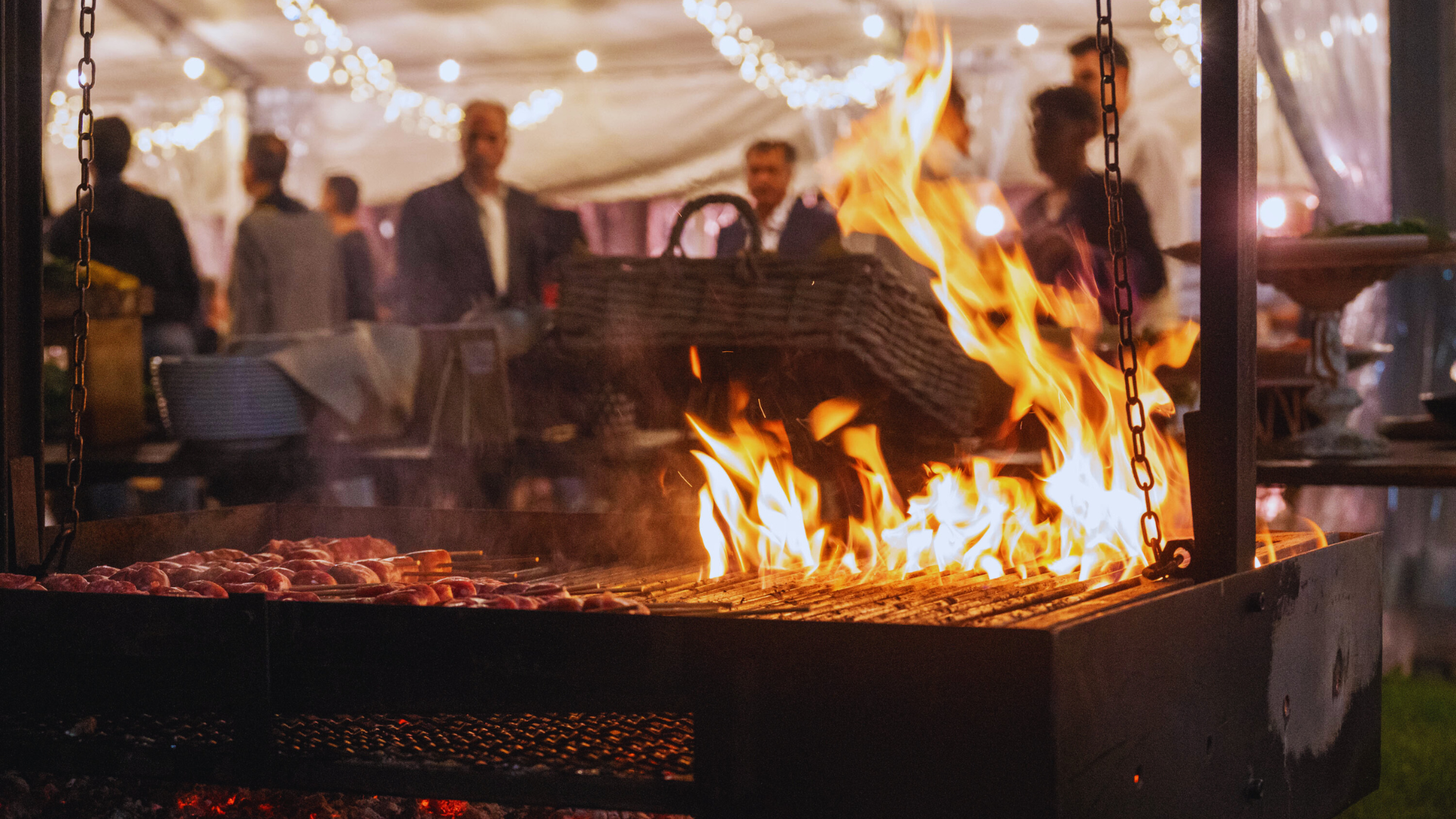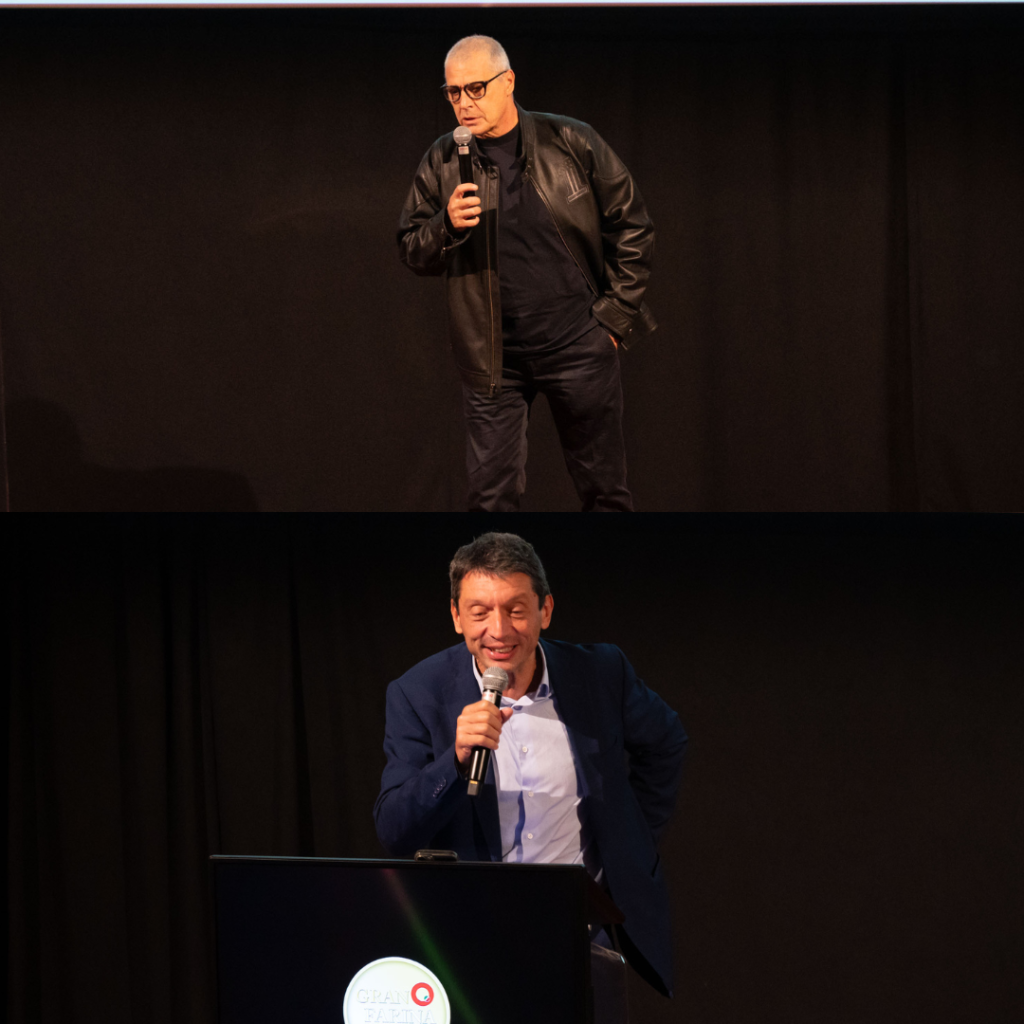
23 September 2023 – Also on Saturday, the day started at the iconic Fulgor cinema in Rimini, famous for the works of film director Federico Fellini. Alberto Antolini – Ocrim CEO – opened the proceedings with the presentation of the new corporate video ‘Ocrim Team’ dedicated to the storage sector. Top management and staff at Ocrim represent true excellence for Cremona. The history of this company carries key elements, not only for our city, but for the Planet, for the world. (…) Italian creativity and genius are well expressed by Ocrim, whose vision is increasingly directed towards innovation and research” were the greetings of the Mayor of Cremona opening the conference on ‘Alternative Flours’.
Giovanni Palisto, journalist at Cremona1 and moderator of the speeches, briefly introduced the technical day and presented the first speaker: Marco Galli – Ocrim Technological Department Director.Marco started working at Ocrim in 1983 as an apprentice miller in the Technology Department. He is currently Head of the Technology Department and Dean of the Ocrim School of Milling Technology, where he is a lecturer and author of several text books. The topic at hand concerned the classification of flours according to Italian regulations, comparing it with some foreign countries. Based on this analysis, he answered two frequently asked questions: “What is the best flour?” and “What does 00 flour mean?”. In conclusion, he stated that finished products are what define the specifications of the flour, and not vice versa. In practice, there are no ‘good flours’ or ‘bad flours’, only flours that are suitable depending on the end use, and the key to a flour’s success lies in its rheological specifications.
The second speaker was Daniele Marani, young sales manager of Molino di Clitunno (Pg), who proudly presented his family business, now in its third generation. For over 40 years, the mill has been producing high quality, BRC and IFS double A certified flours for the world of pizza, pastry, bakery and fresh pasta. The company is characterised by a marked orientation towards the selection of the raw materials (Emilia grains), control of the production chain, research and innovation. Aspects that the recent addition of the BioStoneMill stone milling plant has further enhanced, allowing the production of purely milled professional flours with unique and inimitable characteristics.
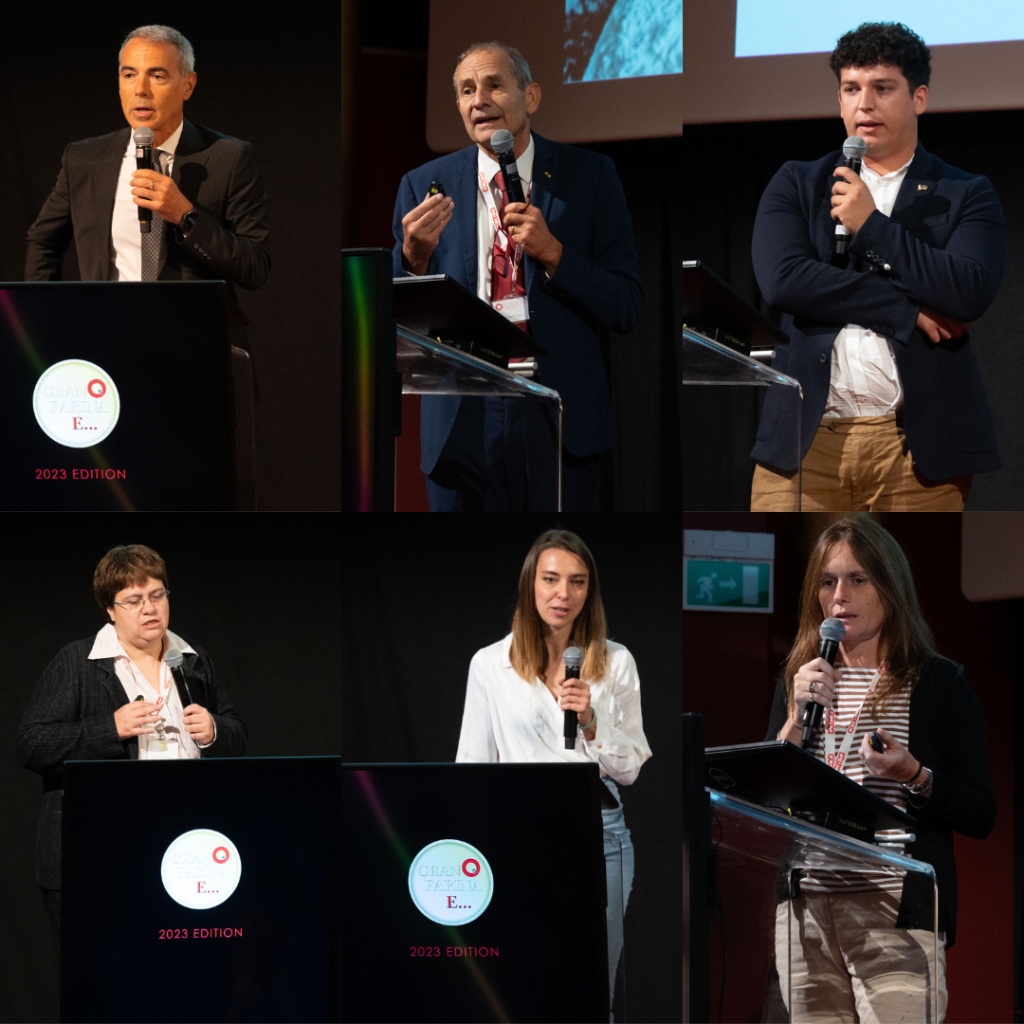
Daniele handed the podium over Simona Digiuni – Head of Research and Technological Development at Ocrim S.p.A. – with a degree in Plant Agricultural Biotechnology (old University system) from the University of Milan and a PhD in Plant Molecular Biology from the University of Cologne (Germany) – Simona illustrated the new technological frontiers in gluten-free flours,which make it possible to recreate the elastic characteristics of gluten. It involves the use of alternative protein matrices to make doughs that offer a much better end product than gluten-free products, with a bread-making capacity similar to wheat.
The third speaker was Elisa Menchetti – Master’s degree in Food Science and Technology from the University of Florence and Master’s degree in Food Safety Management -. After working as a researcher in Norway on the eco-sustainability of Norwegian salmon, she returned to Italy where she works as a quality manager at Pastificio Fabianelli SpA. in Castiglion Fiorentino. Elisa talked to us about legume-based flour and its by-products with a focus on legume pasta, analysing its many nutritional benefits. They are the second largest source of food after cereals and an important source of protein, fibre, micronutrients and B vitamins. In addition to these indisputable health properties, legumes play an important economic role as a source of income for farmers. The hardiness of the crop allows cultivation even in difficult soils and also reduces erosion. A net expansion of the global market for legume flours is thus looming, which will exceed 44.8 billion USD by 2029 compared to 16.44 billion USD in 2020. With a compound annual growth rate of 11.8% for the period 2022-2029.
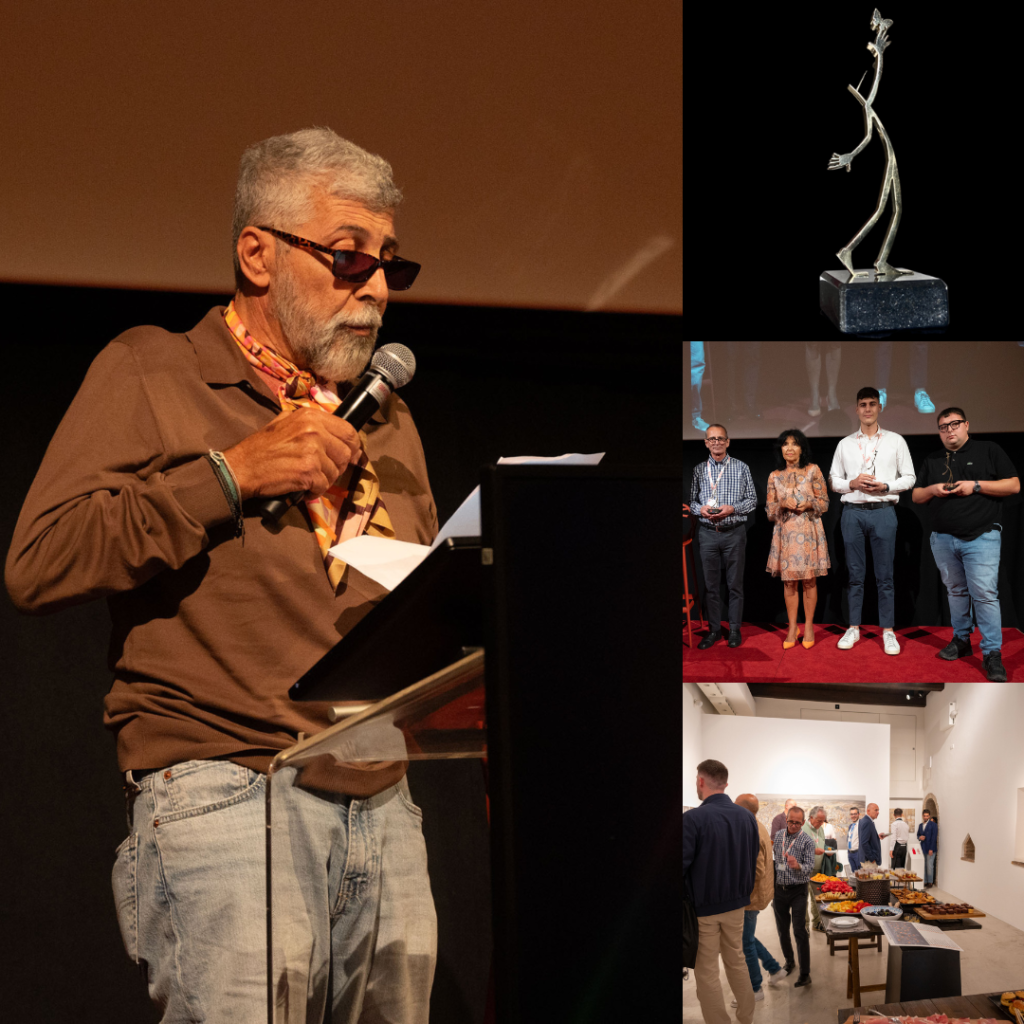
The last scheduled talk was by Costanza Jucker – degree in Agricultural Science at the Faculty of Agricultural and Food Sciences at the University of Milan, PhD in Agricultural Entomology at the University of Bologna – Today she is Associate Professor in Agricultural Entomology at the DeFENS (Department of Sciences for Food, Nutrition and the Environment) of the University of Milan. Author of numerous publications in international journals, she has been working on insects for protein production for several years. In this context, she is studying the possibility of valorising different types of agro-food waste for the production of insects for animal and human consumption. Elisa, after highlighting the importance of insects as an alternative source of protein, spoke about the current legislation concerning their use in food, which already includes four species authorised for human consumption. Novel foods (innovative foods subject to authorisation subject to safety verification), such as insect meals, are expected to develop extensively, and the global market for edible insects is estimated to reach 8 billion USD by 2030 with a growth of 47% between 2019 and 2026. This also benefits the environment because insect farming produces significantly less CO2 than cattle and poultry farming. It could also be a concrete answer to feeding nine billion people.
A lively debate brought the round of talks to an end, during which the speakers responded to guests’ requests for clarification.
At 12.45 p.m., lunchtime was approaching, but there was a surprise, reserved for employees, announced by Sergio Antolini himself, Chairman of Ocrim. It was the presentation of four prizes as a symbolic thank-you to all employees of the Cremona-based company and the Rimini-based company. One award for each category: years of service, longevity at work and Generation Z (the two youngest workers, born after 1996). A few but moving words from the Chairman accompanied the presentation of the OP-Prize awards: “…I cherish the memories of the co-workers who, together with us, have made our company important….This is how our past chairman concluded his farewell letter after 55 years of leading our great family. And here we are today, following in the footsteps of our past chairman. Gratitude to the employees who have made the history of our company, who have taken care of their work, finding in it not only financial reward but also a much more intense reward by rediscovering themselves, rediscovering their identity their independence, giving meaning to the mystery of work, where loving one’s work is the basis of all democracy. And again an acknowledgement to those who are beginning to work, to those who dedicate their youthful enthusiasm, to those whose visions will not pass through the visual lobe, devoid of experience…’.
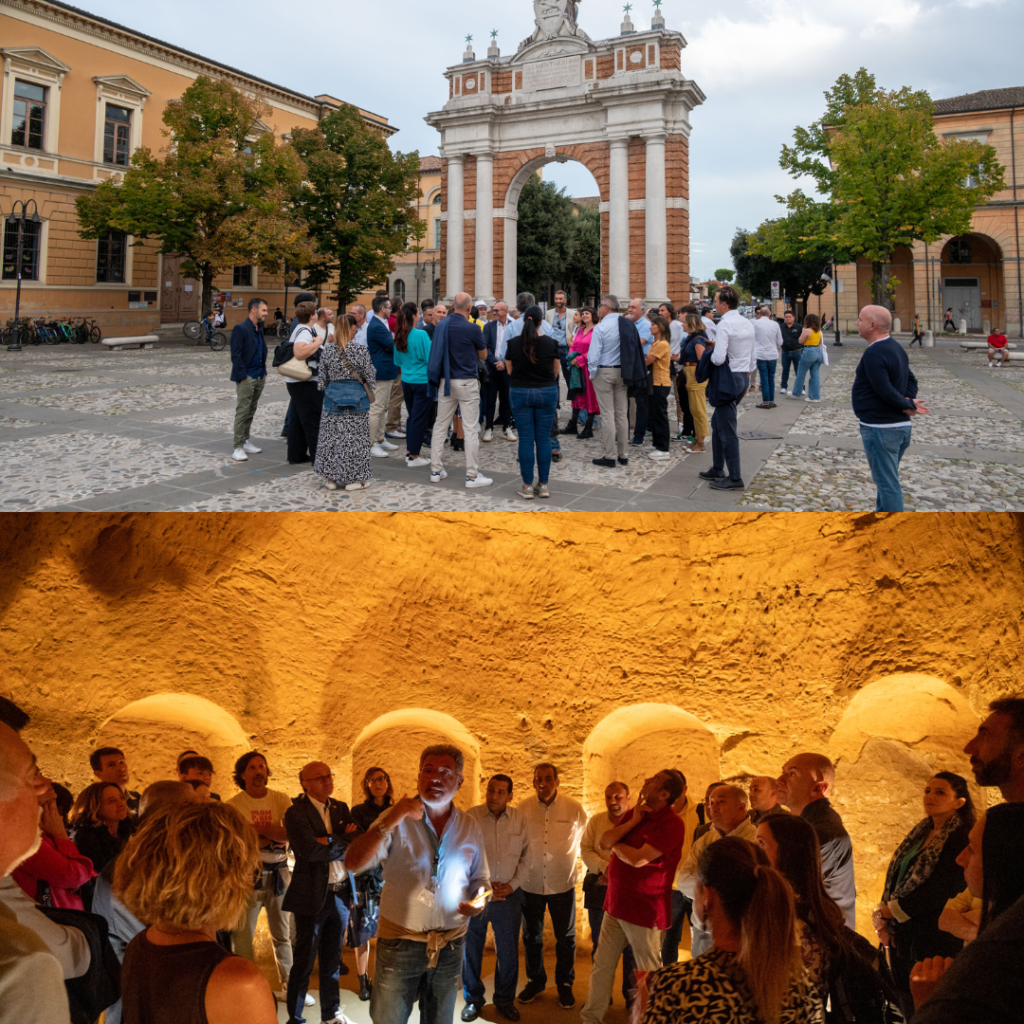
OP-Prizes are small sculptures with the stylised likeness of Pinocchio, chosen as an Italian cultural and literary icon. Collodi’s fable ‘teaches us that we must never stop wanting to learn and grow, even when we think we are all grown up’. They were made with brass-ennobled stainless steel in the workshops of Paglierani – the Antolini family owned company located in Poggio Torriana – and, precisely because they were designed and built at our workshops, this object acquires even greater value.
Mr. Sergio Antolini bid the audience farewell with his concluding speech: ‘it is pleonastic to tell you what an immense honour it is to have been the guest of this wonderful, indeed I would say superlative appointment. (…) The Fulgor, the theatre of Fellini’s dreams, and so Amarcord, which means “I remember” in the Romagnolo dialect, is the fil rouge of my speech, where the memory of an old advertisement from the 1970s with me, my father and my brother leads to the commitment to continue to be as demanding as we have always been. And again an amarcord for the guests who will remember this memorable event’.
This was followed by light lunch at Augeo Art Space, the charming contemporary art gallery located in the historic centre of Rimini, inaugurated by Sergio Antolini in 2014, after the conversion of Palazzo Spina, a 17th-century residence on Corso d’Augusto, the city’s high street. It was very pleasant and stimulating to taste the culinary art of Romagna while observing the works around us.
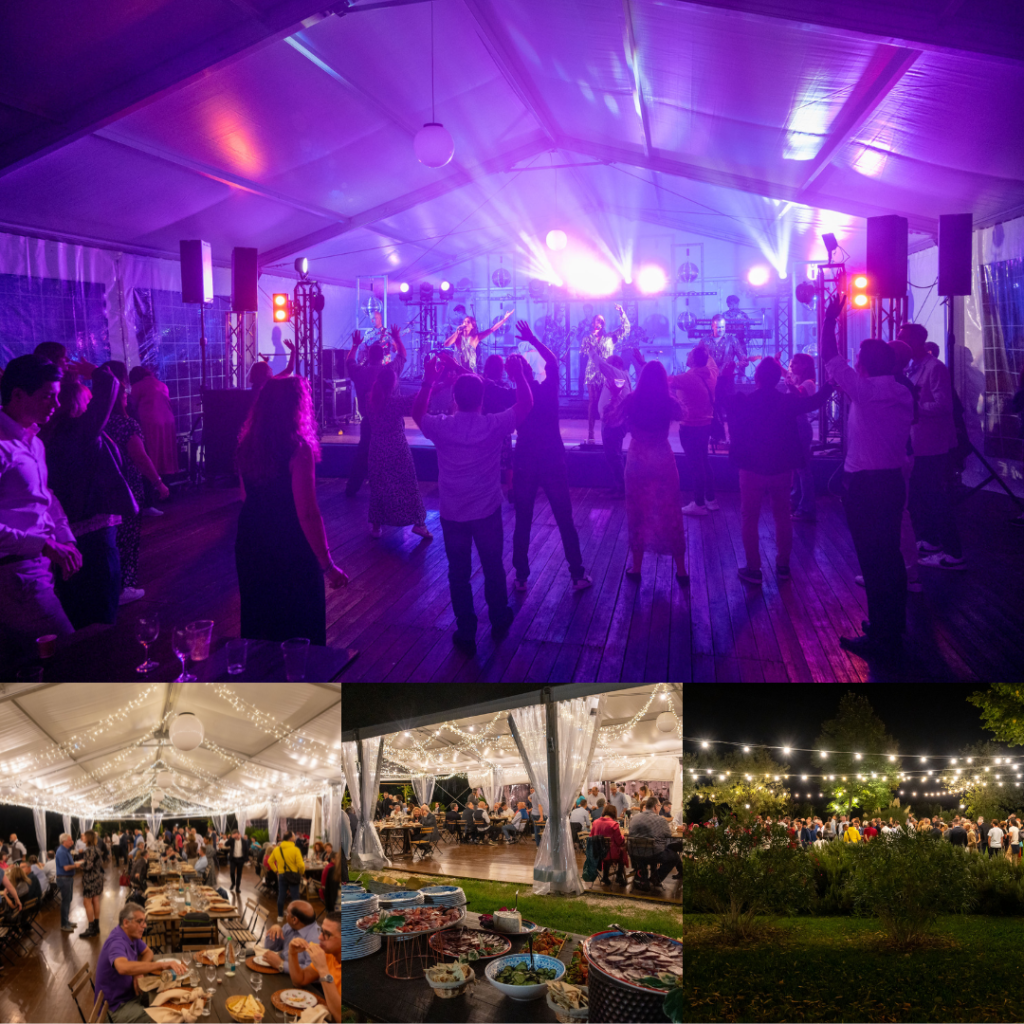
At 5.30 p.m. the guests and team set off to enter the mysterious underground city of Santarcangelo di Romagna. An archaeological interlude that resembled a real adventure through guided tours of caves, tunnels and underground passages to discover ancient legends in an evocative atmosphere of times gone by.
With an informal dinner in the park of the old farmhouse of the ‘Tenuta La Lepre’ and the international and Italian disco dance music of the 70s, 80s and 90s by the group Jbees, which literally made everyone go wild with more than 2 hours of non-stop show, this second day also came to an end. It was not yet time to say goodbye, however, because ‘Wheat, flour, and…’ continued the next day with a visit to the city of Urbino, which we will tell you about in the next post.



